Despite the questionable reliability of wind farms to sustain Alberta’s energy crunch, TransAlta Corporation intends to build another wind power plant in Cardston County with up to 50 operational turbines.1
Pipeline Online reported that Alberta’s 36 wind farms produced 11 megawatts of electricity — about 0.3% of their 3,618 megawatts capacity — on the evening of February 23, with 31 turbines not operational. Part of the reason was due to frigid temperatures. Wind turbines effectively shut down and hibernate when temperatures reach below -30C, which is common throughout Alberta, especially in the north.
“At this moment 91.3% of Alberta’s electricity is being produced by fossil fuels. Wind is at 0.4% of capacity and producing 0.1% of total generation, while solar is at 33.2% of capacity and producing 3.61% of total generation. At the same time we are importing 811 MW or 7%,” tweeted Reliable AB Energy on February 23, 2023.
Eminent Oxford scientist, Emeritus Professor Wade Allison, published the paper “The Inadequacy of Wind Power” in 2023. He writes:
If the wind speed is 10 metres per second (about 20 mph) the power is 600 watts per square metre at 100% efficiency. That means to deliver the same power as Hinkley Point C (3200 million watts) by wind would require 5.5 million square metres of turbine swept area – that should be quite unacceptable to those who care about birds and to other environmentalists.
The Inadequacy of Wind Power, p. 1, Wade Allison
The problem is worse than that, he states. For “if the wind drops to half speed, the power available drops by a factor of 8. Almost worse, if the wind speed doubles, the power delivered goes up 8 times, and as a result the turbine has to be turned off for its own protection.” It’s simply not a sustainable and reliable source of energy. Nuclear physicist, Dr. Wallace Manheimer agrees, warning that…
…modern civilization depends on energy. Right now, we have reasonable energy infrastructure, and the possibility of converting to much more nuclear power in coming decades. If we dismantle our existing power infrastructure, and convert to solar and wind, and solar and wind fail, as they will, it will be the end of modern civilization. It would be especially tragic when not only will this new infrastructure fail, but will cost trillions, trash large portions of the environment, and be entirely unnecessary. The stakes are enormous.
July 31, 2022, Journal of Sustainable Development
Quality Control
But that’s only one problem the wind industry faces. Popular Mechanic recently published an article, “Giant Wind Turbines Keep Mysteriously Falling Over. This Shouldn’t Be Happening.”2
We’re seeing these failures happening in a shorter time frame on the new turbines, and that’s quite concerning.
Fraser McLachlan, CEO of insurer GCube Underwriting to Bloomberg; Popular Mechanics, January 23, 2023
In 2023, Siemens Energy announced a profit hit of €4.5 Billion due to numerous quality control issues.3
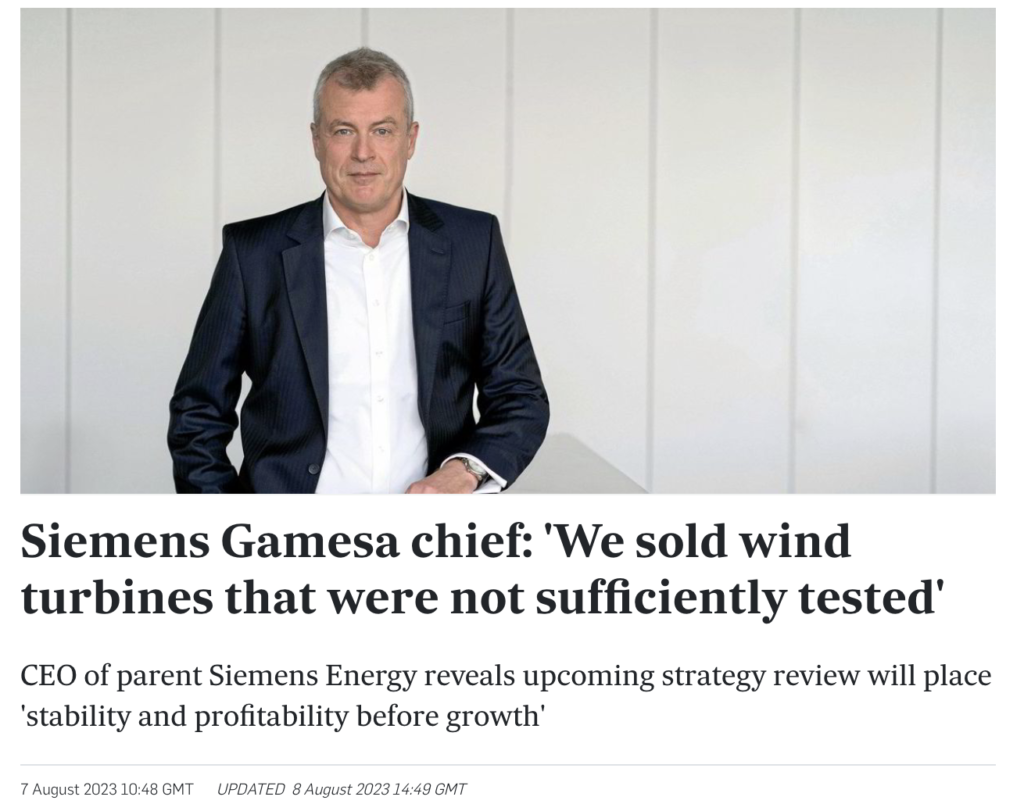
Sky News Australia host, Cory Bernardi, sums it all up in less than two minutes:
Wind turbines look like they’re turning slowly due to their massive size. But the tips of the blades can reach up up to 290 kph (180 mph).4 If they come apart, they can pose serious dangers over large swaths of territory. One commenter on that video posted:
1 month ago, I was on a hike through a wind farm a decade ago, and one of the windmills broke down and blew up and threw debris over a 3 to 4 mile range just completely polluting the environment with fiberglass and other things, not to mention they had to cut down all the trees in the forest and bulldoze roads into the back country to service the wind farm — so there really wasn’t much wilderness left after they were done. The whole thing has always been a joke.
@2FRESH-4U
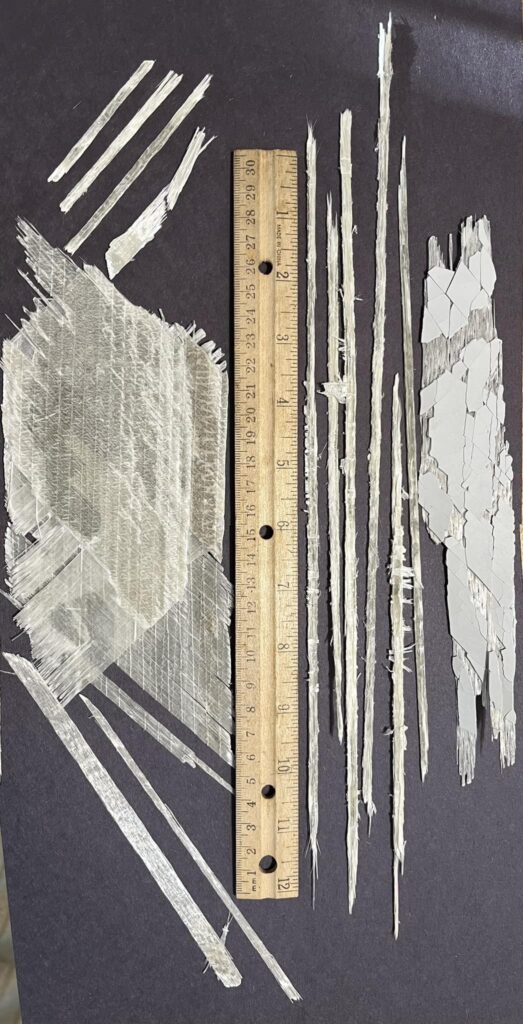
The following account is from Annette Bredthauer on the “shrapnel” from a turbine blade: “We have heard a lot lately how some wind turbine blades are disintegrating for various reasons. This is actual shrapnel from the Irish Creek Industrial Wind project Marshall County, KS. The turbine blade ‘deconstructed’ and flung pieces of fiberglass through the fields. These pieces were picked up on a county road 800 ft from the turbine base. Pieces were thrown at least 200-300 ft more into a grass field of a non-participant neighbor. These fiberglass shards are sharp enough to prick a finger and draw blood. They will never disintegrate- will be present in the grass and hay from this field. Livestock who graze these fields or eat baled hay from these fields have serious health risks or will die! Hay from this field is not suitable for grinding as it just makes more sharp shards. A herd of cattle in the path of the shrapnel as it was flung would be impaled. And there are plasticizers and other toxic chemicals spread across the fields and blowing downwind.”5
The Institute for Energy Research (IER) recently chronicled a number of failed turbines at an increasingly alarming rate, noting that many of them are occurring in rural areas.6 “Wind turbine failures are on an upswing,” writes IER. “While failures have occurred on older models, the failures now are happening in a shorter time frame on the newer, larger turbines. Besides supply chain issues and fluctuating material pricing, wind manufacturers are facing issues with stabilizing quality with the push for larger turbines that can produce more energy. Clearly, the energy transition that western politicians want is moving too quickly for technology and manufacturing to keep up with production and quality control. Ultimately, consumers will pay for their haste.”6
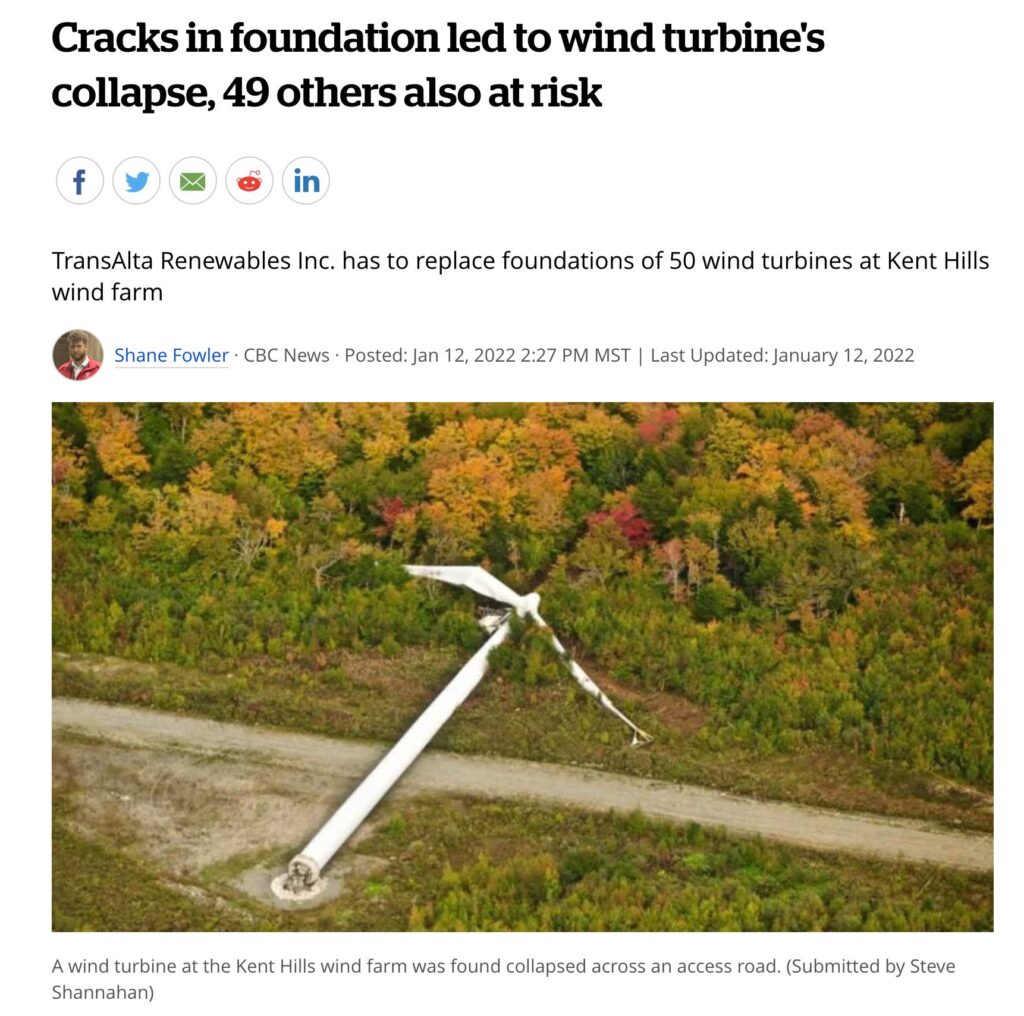
Then there’s the lifespan of blades, which is questionable. Reports we are hearing from southern Alberta are that some are lasting less than 10 years. The problem is that thousands of turbine blades — often the size of a 747 jet — can’t recycled. They’re going into landfills.
“Turbine blades can last up to 20 years, but many are taken down after just 10 so they can be replaced with bigger and more powerful designs,” reports the LA Times.7 “Tens of thousands of aging blades are coming down from steel towers around the world and most have nowhere to go but landfills.” And that’s a huge problem, not only for taking up valuable land, but the poison it leaves in the soil. As we previously reported, Bisphenol A (BPA) is one of the ingredients in these blades. Just one gram of BPA can make 10 million liters of water toxic.8 How can local counties justify burying thousands of kilograms of fiberglass blades with BPA?
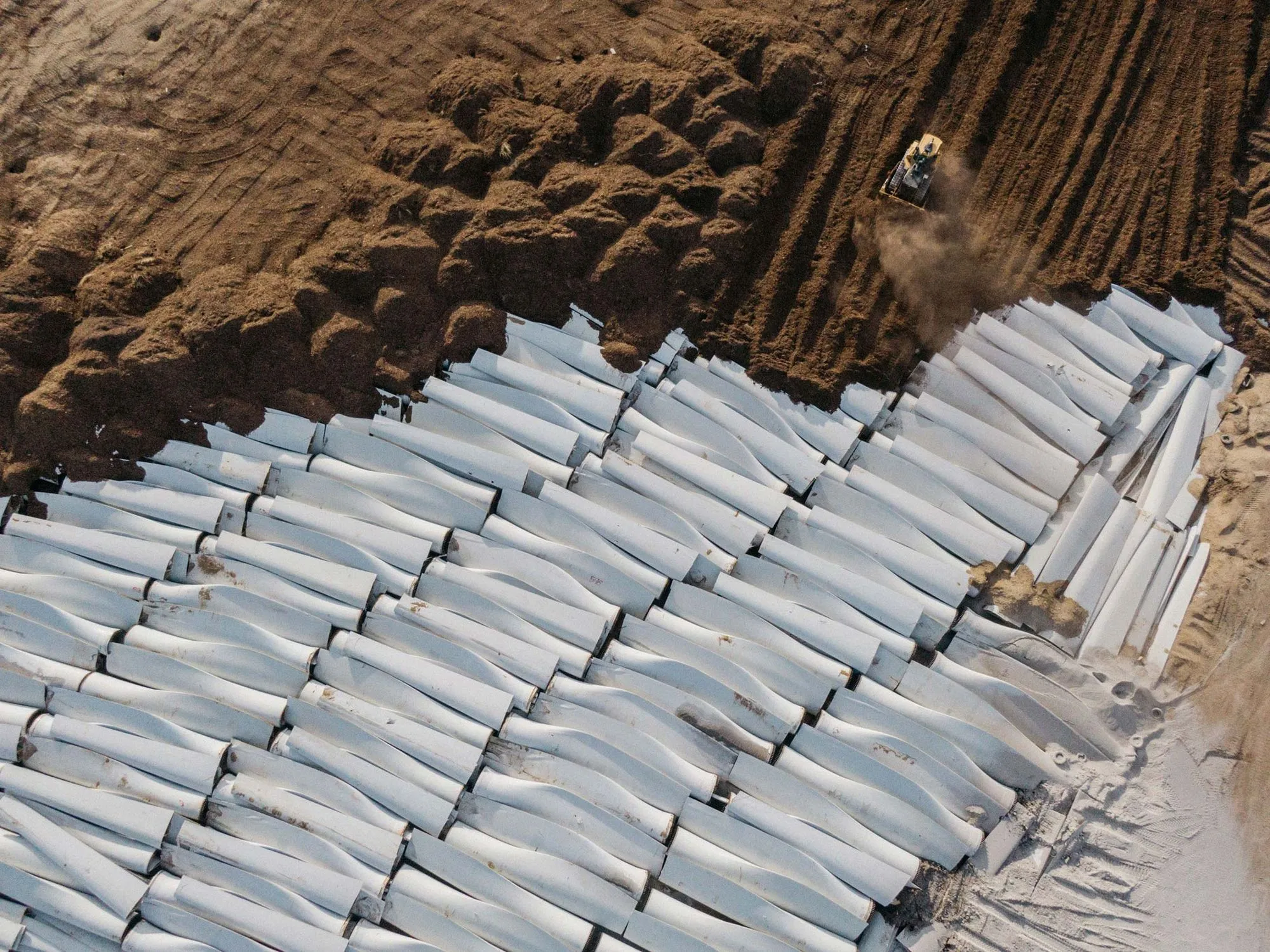
Photographer: Benjamin Rasmussen for Bloomberg Green
Health hazards. Safety hazards. Recycling hazards.9 Expensive. Invasive. Even polluting. The idea that these are “green” sources of energy that “cleanly” replace conventional fossil fuels is a big fat lie. Wind power has its place, particularly in remote areas or in smaller applications. But the push to replace inexpensive and accessible fossil fuels (that we can extract and burn cleanly through advanced technology) with massive invasive wind farms, bears no environmental or economic sense. It increasingly appears that the explosion of wind farms is a response to ideological demands, not good economics, and certainly, not good ethics given the risks these are to those communities where wind turbines are being built in their midst.
- “Alberta wind farms nearly ground to halt amid extremely cold February weather”, rebelnews.com, March 4, 2023[↩]
- January 23, 2023; popularmechanics.com[↩]
- August 7, 2023 Bloomberg[↩]
- surgeaccelerator.com[↩]
- from Facebook[↩]
- “Wind Turbine Collapses are Supposedly Rare, but Several Have Occurred”, January 30, 2023; instituteforenergyresearch.org[↩][↩]
- “Wind turbine blades are piling up in landfills”, latimes.com, Feb. 7, 2020[↩]
- cf. Jeopardizing the Lakeland: Turbines[↩]
- “While most of a turbine can be recycled or find a second life on another wind farm, researchers estimate the U.S. will have more than 720,000 tons of blade material to dispose of over the next 20 years, a figure that doesn’t include newer, taller higher-capacity versions.” (NPR, Sept. 10, 2019) [↩]
Wind Concerns is a collaboration of citizens of the Lakeland Alberta region against proposed wind turbine projects.

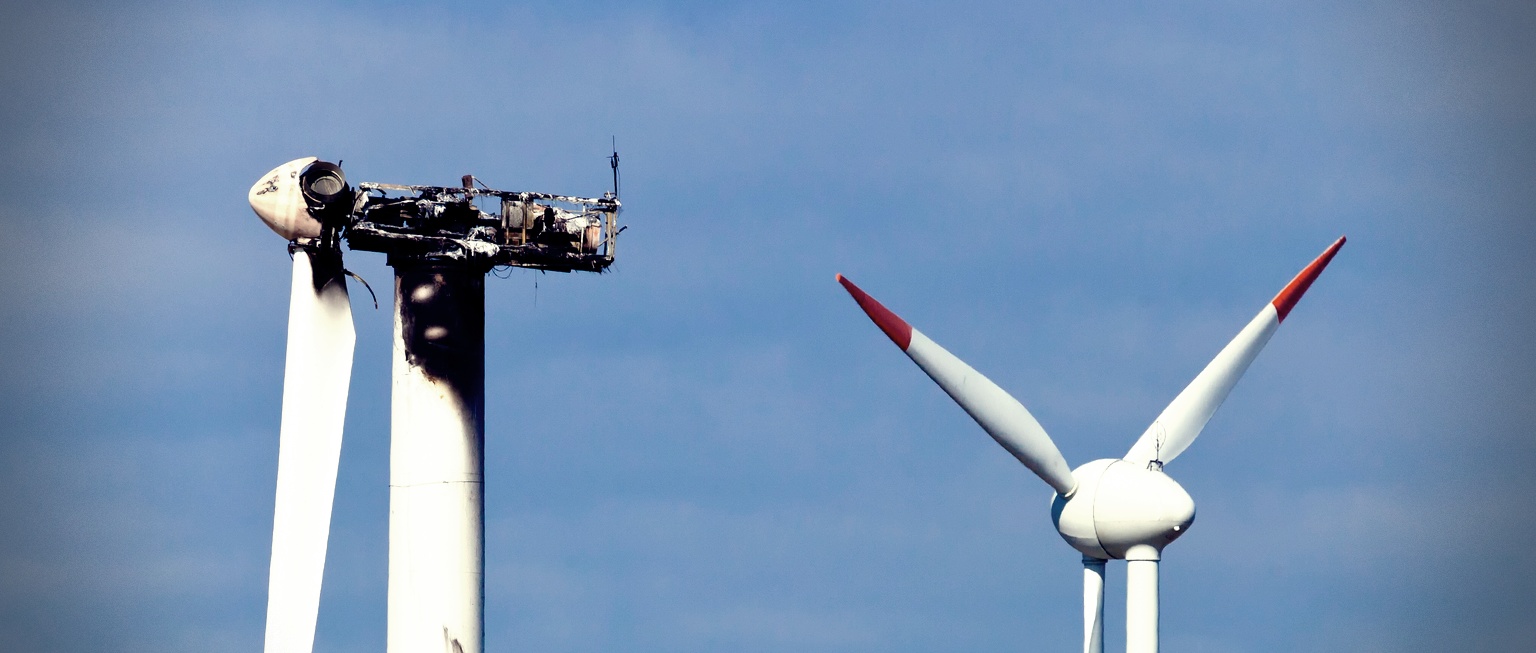

Mark – did you know that the blades also contain Ricin? A very dangerous neuro toxin. I know it from a now politician who previously worked 12 years on a wind turbine factory here in my country, and a woman living close to me – who now has cancer(!) – told me the same 2 years ago. The intention with these monsters is obviously evil. What is their lame excuse for adding ricin, I wonder??